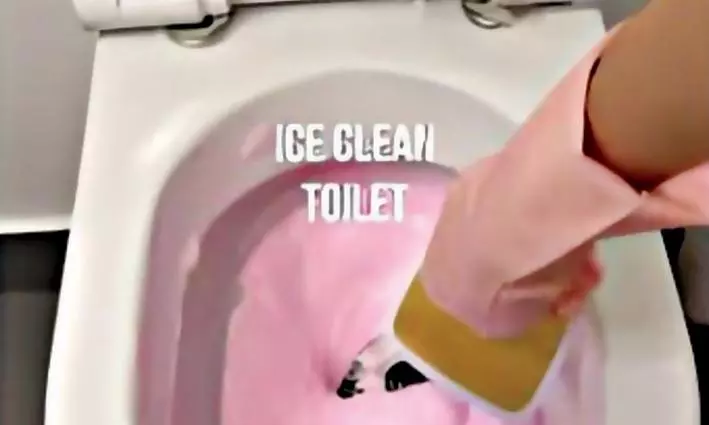By Rochelle Crasto
Copyright deccanchronicle

Cleaning has always been considered a mundane, almost forgettable chore. Sweep, mop, scrub, repeat — a dull rhythm that few would bother filming. Enter CleanTok, a niche corner of TikTok that has turned domestic chores into a full-blown performance buzz. Animal-skin rugs are used as toilet mats, glittery bath bombs are dropped straight into bowls, and water tanks are plastered with personalised stickers. Every swipe, scrub, and spray is choreographed for visual drama. What was once practical now feels theatrical, almost like watching a stage play unfold in someone’s bathroom.The appeal is obvious: it’s mesmerising. The transformation from chaos to sparkling order is visually satisfying, a feast for the eyes. Before-and-after clips dominate feeds, and creators carefully frame each shot, lighting every corner to perfection. The camera doesn’t just capture cleaning; it celebrates it, turning chores into a narrative, where the protagonist is a mop and the villain is grime.Anita Desai, Professional Organizer & Cleaning Consul-tant, “People don’t just watch cleaning videos for tips — they watch for the satisfaction of seeing chaos turn into order. It’s like a mini makeover for your mind.” Clean Sweep The fascination goes deeper than simple curiosity. Psychologists explain that watching mess being conquered triggers a sense of control and relief, especially in an age where life feels increasingly unpredictable. There’s something almost primal about witnessing chaos vanish, a mini-victory for the viewer. Add ASMR-worthy scrubs, sprays, and swishes, and CleanTok hits multiple pleasure points at once. The crackle of a mop against a polished floor or the fizz of a bath bomb hitting the water makes viewers pause, listen, and, oddly enough, feel satisfied.Dr. Rohan Mehta, Clinical Psychologist adds, “The obsession with cleaning TikToks often comes from our brain’s craving for control and closure. Watching dirt disappear gives a sense of calm, especially when life feels messy.”For many, it’s also a subtle stress reliever. “I watch CleanTok before bed,” says Priya Menon, 24, from Bangalore. “It’s oddly calming. I don’t even care if it’s a toilet or a sink; the whole process just makes me feel in control of something.” This dual appeal — visual satisfaction and psychological comfort — explains why some videos rack up millions of views within hours.Domestic CreativityCleanTok influencers are not just cleaning; they’re reimagining the chore entirely. Symmetry, color coordination, and visual tricks dominate content. Glitter, colored liquids, and even unexpected textures like sand or tiny beads are sprinkled into toilets, sinks, or drains to create dramatic effects. Some creators stage elaborate “before and after” sequences with humorous commentary, slow-motion reveals, or exaggerated reactions. “CleanTok works because it transforms chores into micro-entertainment. It’s not about soap or sponges, it’s about the story: grime versus sparkle. That drama, packaged in under a minute, keeps audiences hooked and makes cleaning products suddenly glamorous,” says Jayden D’souza, a marketing executive.It’s not purely about aesthetics either. Many creators treat cleaning as a form of self-expression, experimenting with choreography, lighting, and color schemes. There’s humor too, with dramatic narrations that turn scrubbing a bathroom tile into an epic saga. Viewers are left in awe — or laughing — as the ordinary is transformed into something extraordinary. The line between practical cleaning and content creation is blurred, leaving audiences unsure whether they’re watching a tutorial, an art project, or a comedy sketch. Digital StorytellingWhat makes CleanTok so compelling is how it taps into larger cultural trends. In an era of fast-paced digital life, it offers a mini escape. The obsession with aesthetic perfection and visually satisfying rituals mirrors a deeper craving for order in daily life. Millennials and Gen Z viewers find in it a comforting ritual, one they can experience vicariously without lifting a mop. “CleanTok reflects our culture’s obsession with aesthetics,” says Anirudh Sharma, cultural studies student. “Even something utilitarian like cleaning is now curated for beauty and spectacle. It says a lot about how we want our lives — and even our dirt — to look good online.”It’s also a reflection of social media’s evolving role: chores are no longer private; they are content. A once-invisible act becomes a platform for storytelling, creativity, and even obsession. Families experiment with DIY hacks they see online, young adults indulge in over-the-top rituals, and viewers scroll endlessly, captivated by what ordinary tasks might be turned into a spectacle next. Cleaning, in the world of CleanTok, is no longer just about hygiene; it’s entertainment, creativity, and digital theatre rolled into one.“Funny thing is, my daughter will happily binge CleanTok…